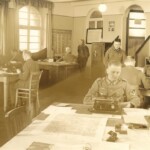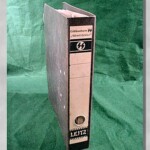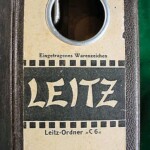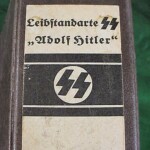The standard German office filing system before, during and after WWII used two-ring binders. In Germany, these were invented by Fritz Soennecken in 1886. By the 1930s, Soennecken was only one of many companies making two-ring binders in various sizes.
German military, civil, political and paramilitary organizations during the Third Reich used two-ring binders to organize and store the vast amount of paperwork that was required by the bureaucratic mindset of that era. These were used in offices as well as in field settings. Here is a German Army administrative officer with some files.
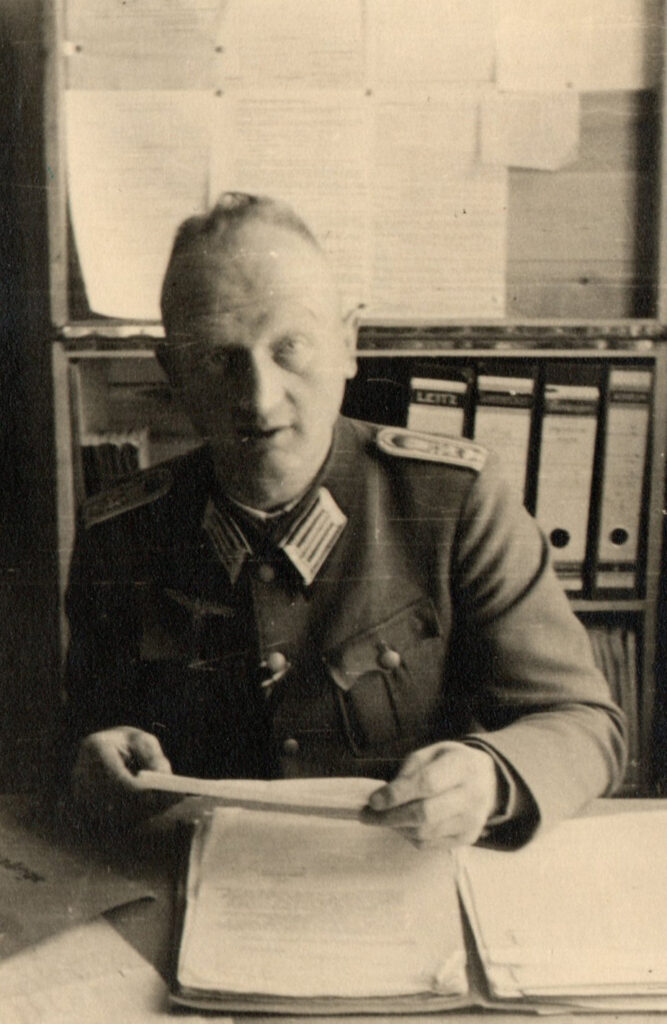
The binder on the left here is by the Leitz company, and the one next to it is Soennecken.
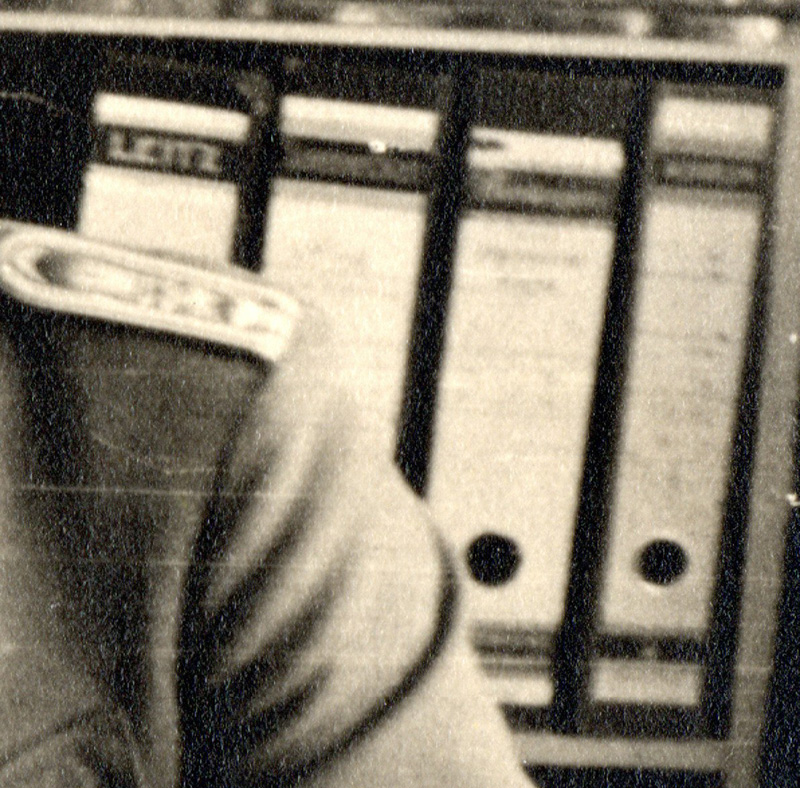
This photo from the book “God, Honor, Fatherland” published by RZM Imports shows a company clerk in a field setting. His field desk has binders in different widths.
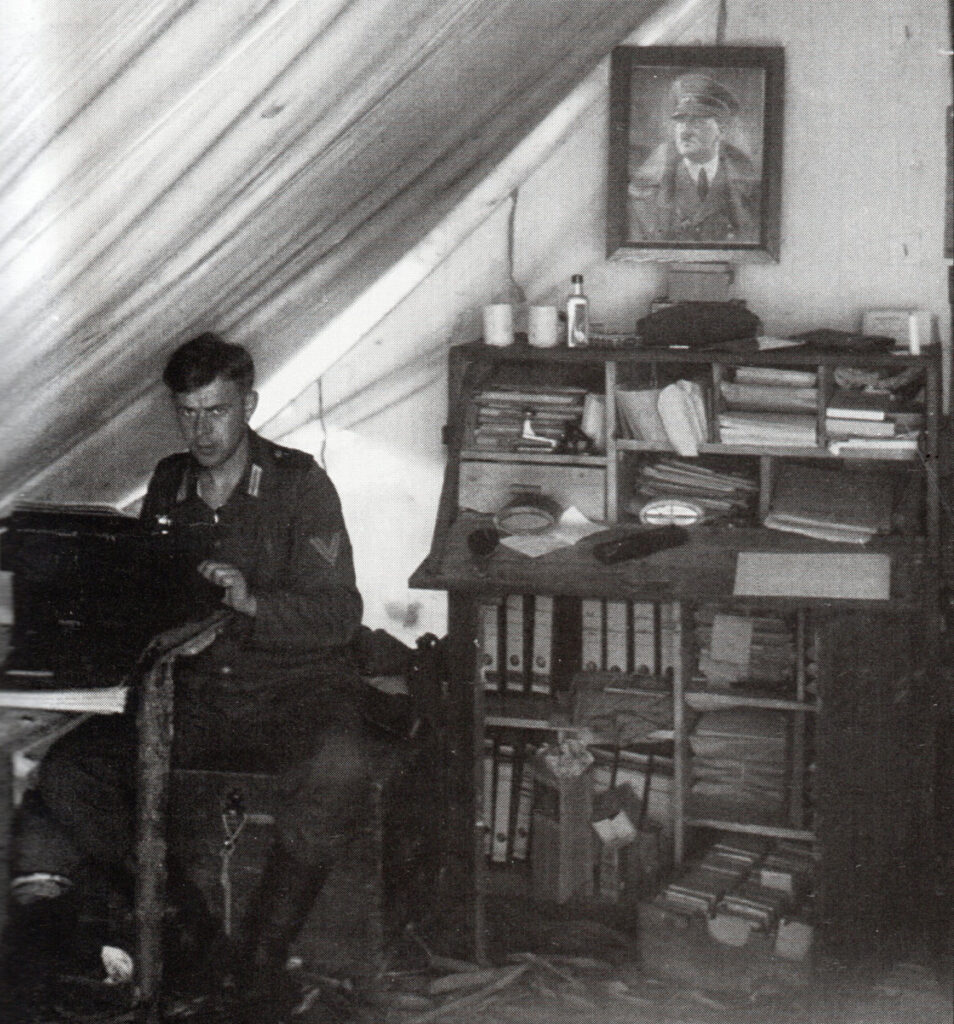
Here are some more German Army photos showing these binders.
The Netflix documentary “Ordinary Men: The Forgotten Holocaust” includes a clip of film showing Allied investigators working on the Nuremberg trials as they pore through captured German records, circa 1947. This image is from that film. Brand names visible here include Leitz and Kunert.
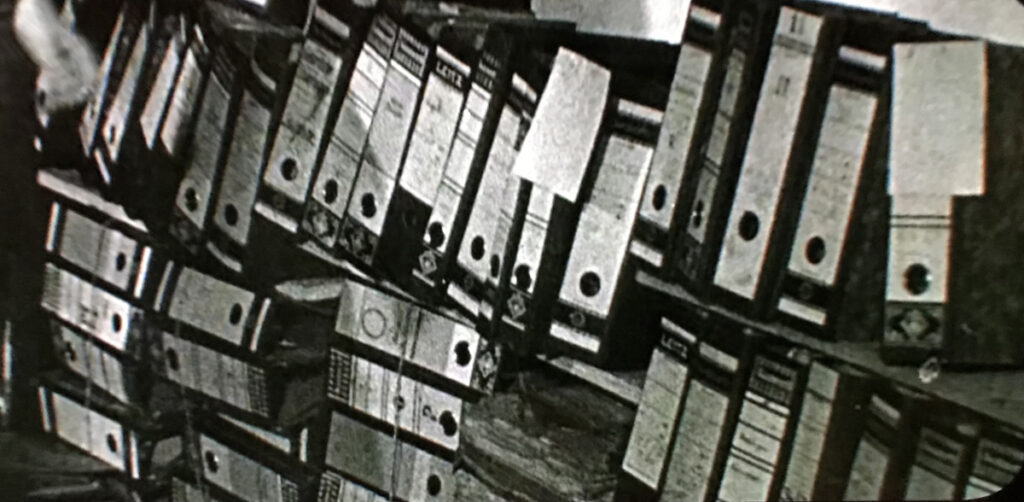
There were some wartime binder labels with military type emblems printed on them. Some National Archives microfilm rolls include photos of binder spine labels with the German national eagle and swastika emblem. This one is from roll T-78 R-391 and is a spine label from a binder that once held records of the OKH, the supreme German Army command.
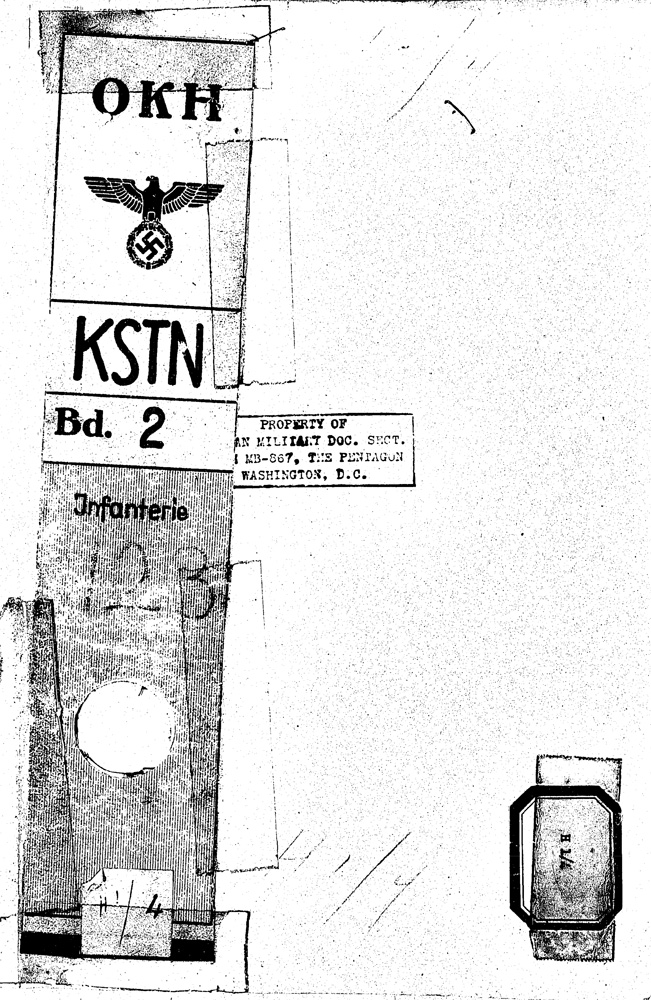
There are also some purportedly original binders pre-printed with designations of German military units. Here is one such example. If not for the OKH binders in NARA records I would have a hard time accepting things such as this as real.
Looking at original photos, my opinion is that most binders used by Wehrmacht field units were the same commercially available binders anyone could buy, in various sizes, made by various commercial firms.
Original pre-1945 German binders are scarce today. Most were discarded over time. Leitz and some other makers still make binders in the same design. They are not absolutely identical to the WWII-era versions. As one would expect, they incorporate modern materials. Despite this, these modern binders in the old design remain the best stand-in for period originals, for living history. Using them for reenactment requires replacing the modern label.
Reproduction labels
These are reproduction labels I made for use. I made these between around 2012 and 2023. All of these are made to fit Leitz 3″ A4 binders.
Leitz full-length label I copied this from a vintage but postwar binder with some minor edits. Labels that look like this are common in wartime photos. You will need to make a circular cut-out to accommodate the hole on the binder spine. This is the only label I have made that needs to be printed in color. This needs to be printed on Legal size paper.
Leitz short label This is a Leitz label that I made mostly using graphics from period photos. Two binders with these “short” type labels can be seen in the image above of the records at Nuremberg after the war. This label is sized to fit right over the modern Leitz label. I usually carefully remove the modern label with a razor blade then paste the new label over where it was.
Soennecken label This label is copied exactly from an original 1930s era binder in my collection. The only edit I made was to slightly modify the proportions to fit the Leitz 3″ binder. As with the label above, this covers the modern label perfectly.
Merkur label I copied this label from reproduction labels used in displays at a couple of museums in Krakow that focus on the German occupation era. This label has no accomodation for the hole in Leitz binders. At the museums they either cut up the label to make it work with the hole, or they simply pasted the label over the hole. This also needs to be printed on Legal size paper.
Fantasy labels
These are labels I made before I had anything original to copy. The graphics on these labels are original emblems for German office supply companies from 1940-45. All of the graphic elements are real and from the time but I have no evidence these were ever used on binder labels. People still do ask me for them so I am including them here.
“Frijo” label for 3″ binders
“Gebr. Weinitschke” label for 2″ binders

